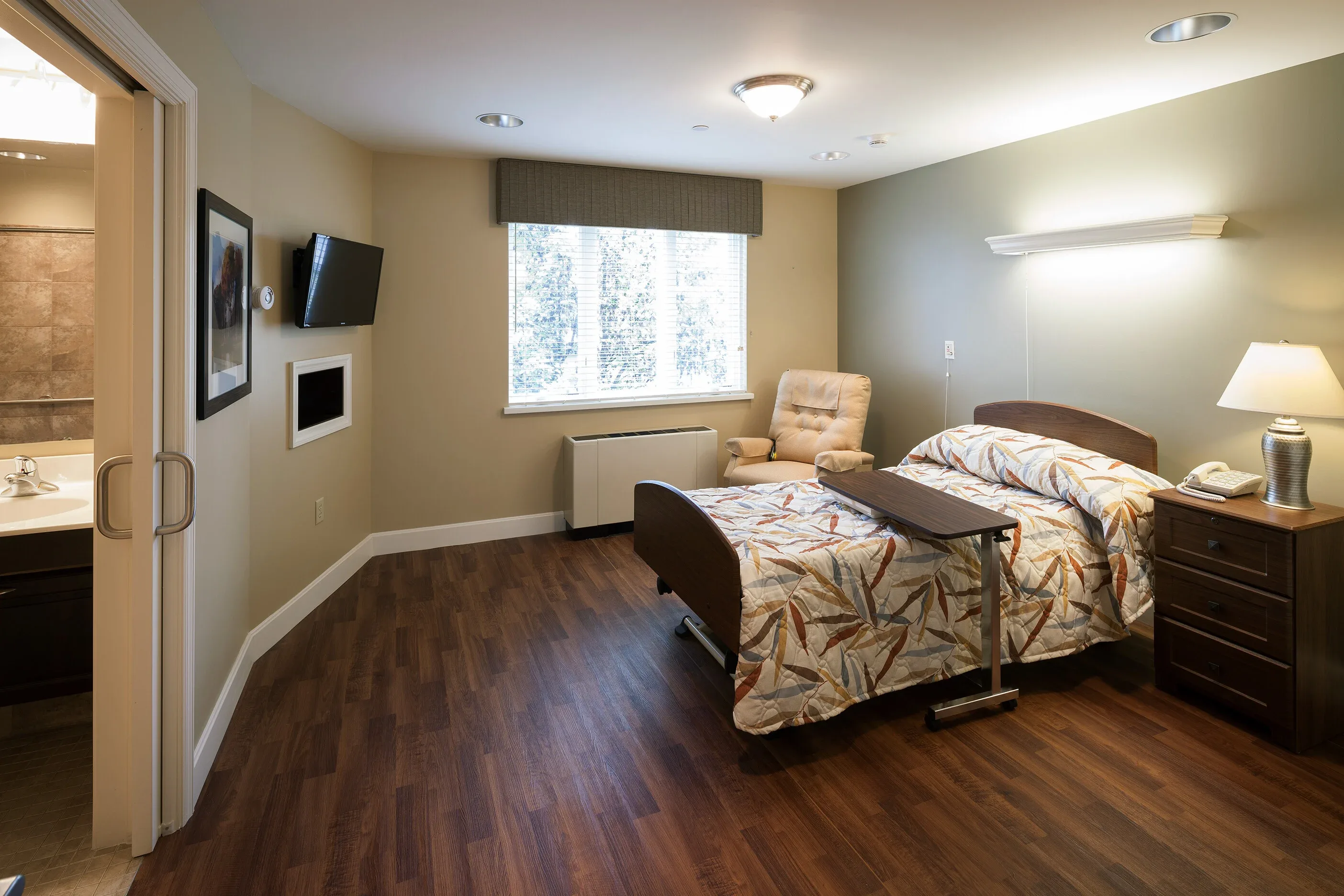Ohio’s private room incentive statute (R.C. 5165.158) was enacted to align Medicaid funding with quality improvement by incentivizing the development and use of true private rooms in nursing facilities. The General Assembly recognized that private rooms are central to modern long-term care—promoting dignity, enhancing infection control, reducing unnecessary hospitalizations, and creating safer, higher-quality environments for residents.
But the law, as currently implemented, is falling short. Its capped funding has been consumed by outdated facilities, including homes with “Category 2” shared-bathroom rooms and operators with poor quality ratings. Meanwhile, brand-new, all-private-room facilities—the very projects this law was designed to encourage—are being denied.
This mismatch discourages investment and undermines the state’s own stated goals.
The Problem
- Statutory Loophole: Current law requires applicants not be (a) a Special Focus Facility (SFF), (b) on the SFF watch list, or (c) a 1-star facility. But once approved, a facility can fall into these failing categories and still keep payments. This is almost certainly a drafting error and must be corrected.
- Cap Misallocation: Limited funds have been exhausted by low-quality providers in old buildings, many with shared-bathroom rooms.
- Missed Policy Goals: All-private-room facilities, newly built to embody Ohio’s priorities, are shut out.
- Investment Discouraged: Operators planning to build multiple new homes annually are putting projects on hold because reimbursement is uncertain.
Grading the System: A Simple Comparison
The CMS Five-Star Quality Rating System works like a school report card:
- 5-star = A (Excellent)
- 4-star = B (Good)
- 3-star = C (Average)
- 2-star = D (Needs Improvement)
- 1-star = F (Failing)
Ohio continues to fund “D” and “F” homes with private room add-ons, while denying “A-level” new builds. This is backwards. Taxpayer dollars should support at least passing grades—not subsidize failure.
Policy Solutions
The most urgent and unavoidable step is to close the loophole in current law. From there, Ohio can strengthen the statute to ensure Medicaid dollars truly support quality and modernization:
- Close the Loophole (Must-Do Fix)
- Current law bars 1-star, Special Focus Facilities (SFF), and SFF watch list facilities from applyingfor private room add-ons, but it does not remove payments if a facility later falls into one of these failing categories.
- This drafting error means low-quality providers can keep collecting add-ons even after declining—directly denying those dollars to higher-quality facilities in a capped funding system.
- Payments must immediately cease if a facility becomes a 1-star, SFF, or enters SFF watch.
- Tighten Quality Eligibility
- Add-on eligibility should extend only to CMS 3–5 star facilities.
- This ensures Medicaid dollars reward at least passing performance—“C” grade or better—while excluding “D” and “F” homes that undermine resident safety and care.
- Exempt New All-Private-Room Builds from the Cap
- Newly constructed facilities with only Category 1 private rooms should not be subject to the statewide cap.
- These projects represent the future of long-term care and the very goal of the statute; denying them is counterproductive.
- Eliminate Category 2 (Shared Bath) Rooms
- Jack-and-Jill style bathrooms undermine infection control and dignity, defeating the purpose of private-room policy.
- Add-ons should be restricted to true Category 1 private rooms with private, in-room bathrooms.
Rationale
Reforming R.C. 5165.158 is not just about fiscal prudence—it is about safer care, higher standards, and dignity for residents.
1. Infection Control
- Shared bathrooms (Category 2 rooms) defeat the very purpose of private rooms.
- COVID-19 showed how quickly infections spread in shared-bath environments.
- True private rooms with private baths are a proven safeguard against outbreaks and hospital readmissions.
2. Dignity and Mental Health
- Semi-private living strips residents of privacy, exacerbating stress and agitation.
- Private rooms improve sleep, reduce conflict, and restore a sense of dignity.
3. Safer, Less Medicated Care
- Behavioral agitation in semi-private settings often drives unnecessary antipsychotic use.
- Private rooms reduce triggers for aggression, directly supporting CMS initiatives to lower inappropriate prescribing.
4. Flexibility of Care
- In shared rooms, rising acuity often forces disruptive moves.
- Private rooms allow residents to remain in place as care needs change, avoiding trauma and instability.
5. Fiscal Responsibility & Accountability
- Funds should reward quality providers, not sustain failing ones.
- Closing the loophole ensures taxpayer dollars don’t flow to facilities that later decline into failure.
6. Alignment with State Goals
- Ohio has already recognized the importance of private rooms by enacting R.C. 5165.158.
- Reforming the statute ensures the policy works as intended: modernizing infrastructure, improving care, and aligning funding with performance.
Conclusion
At a minimum, the General Assembly must act to close the loophole in R.C. 5165.158. Allowing failing facilities to keep private room add-on payments after falling to 1-star or SFF status is indefensible—especially in a capped funding system where every dollar directed to low performers is a dollar denied to high-quality providers.
Once that fix is made, Ohio should take the next step:
- Limit eligibility to 3–5 star facilities,
- Exempt new all-private-room builds from the cap, and
- Eliminate additional reimbursement for Category 2 shared-bathroom rooms.
Together, these changes will protect taxpayer dollars, promote modernization, and ensure Medicaid funding flows to facilities that actually deliver safer, higher-quality environments for Ohio’s residents
Related Blog Entries
Close the Loophole: Stop 1-Star & Special Focus Facilities from Collecting Private Room Incentive Payments




